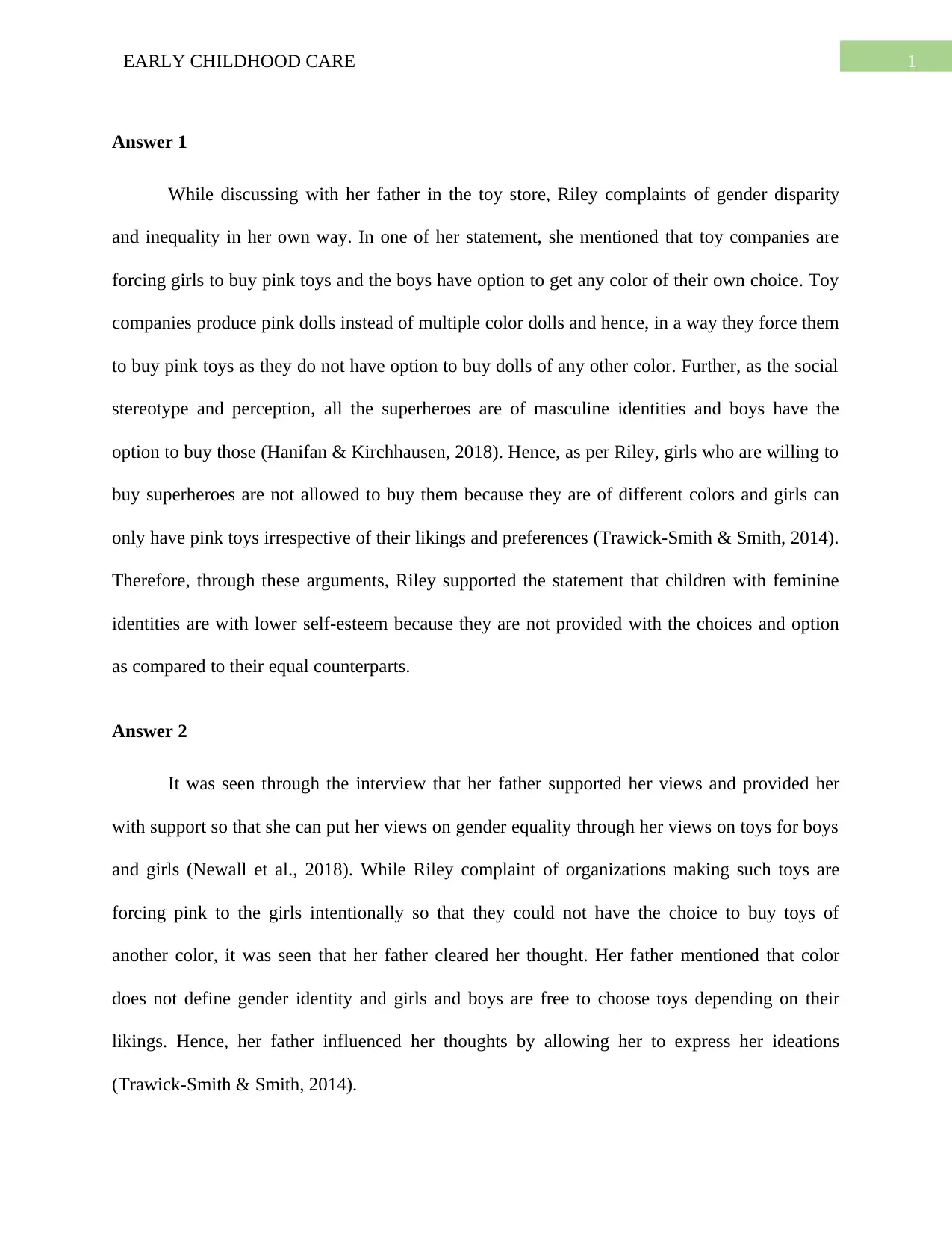Early Childhood Education: Gender Roles and Impact on Self-Esteem
VerifiedAdded on 2023/04/06
|3
|407
|339
Case Study
AI Summary
This case study explores the issue of gender disparity as perceived by a child named Riley in a toy store setting, highlighting her concerns about toy companies promoting gender stereotypes by limiting choices for girls to predominantly pink toys and portraying superheroes as exclusively masculine. Riley argues that this lack of variety and representation negatively impacts the self-esteem of children with feminine identities by not providing them with the same options and opportunities as their male counterparts. The case further examines the role of Riley's father in supporting her views and clarifying her understanding of gender identity, emphasizing that color should not define gender and that children should be free to choose toys based on their preferences. This analysis underscores the broader implications of gender stereotypes in early childhood development and the importance of parental support in shaping children's perceptions and self-esteem. Desklib provides similar solved assignments and study resources for students.
1 out of 3




![[object Object]](/_next/static/media/star-bottom.7253800d.svg)